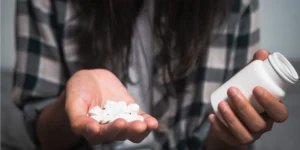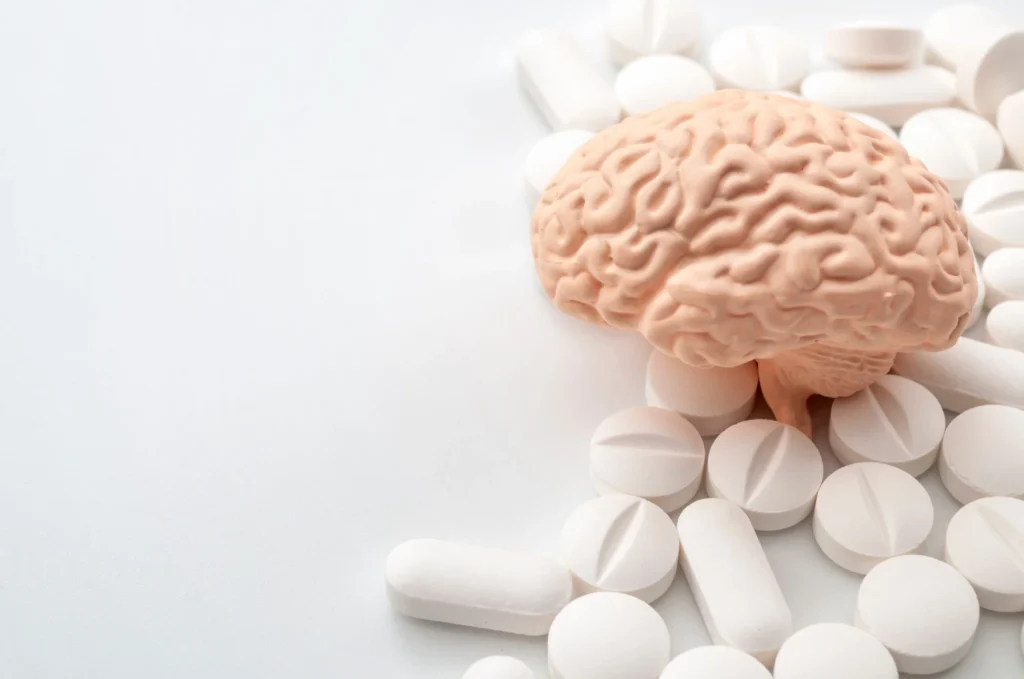Bromazepam, a benzodiazepine prescribed for anxiety and insomnia, can be a double-edged sword. While effective in managing symptoms, its potential for addiction is a growing concern. Understanding the nature of bromazepam addiction is crucial for individuals and families navigating the challenges it presents. This blog delves into the signs, underlying causes, and available treatments for bromazepam addiction, aiming to provide a comprehensive guide for those affected.
Contents
Is Benzodiazepine Addictive?
 Yes, benzodiazepines are addictive. These medications, commonly prescribed for anxiety, insomnia, and certain other conditions, have a high potential for dependence and addiction due to their effects on the central nervous system. Benzodiazepines work by enhancing the effect of the neurotransmitter gamma-aminobutyric acid (GABA), which produces a calming effect.
Yes, benzodiazepines are addictive. These medications, commonly prescribed for anxiety, insomnia, and certain other conditions, have a high potential for dependence and addiction due to their effects on the central nervous system. Benzodiazepines work by enhancing the effect of the neurotransmitter gamma-aminobutyric acid (GABA), which produces a calming effect.
This makes them effective for short-term relief of anxiety and insomnia. However, prolonged use can lead to tolerance, where higher doses are needed to achieve the same effect. Over time, this can result in physical dependence, where the body requires the drug to function normally, and psychological dependence, where individuals believe they need the drug to cope with daily life.
The potential for addiction makes it important to explore alternative treatments for anxiety and insomnia. And to use benzodiazepines with caution and awareness of their addictive properties.
What Causes Bromazepam Addiction?
Bromazepam addiction, like addiction to other benzodiazepines, is primarily caused by the drug’s impact on the brain’s chemistry and the individual’s physiological and psychological factors. Here are some key causes:
Neurochemical Impact
Bromazepam enhances the effect of gamma-aminobutyric acid (GABA), a neurotransmitter that inhibits brain activity and produces a calming effect. With repeated use, the brain starts to rely on bromazepam to maintain this balance. Over time, this can lead to tolerance, where higher doses are needed to achieve the same effect. This escalation in dosage increases the risk of addiction.
Psychological and Social Factors
Individuals with pre-existing mental health conditions, such as anxiety, depression, or stress-related disorders, are more susceptible to bromazepam addiction. The drug’s immediate relief can create a psychological dependency, where individuals feel unable to cope without it. Additionally, social factors such as a lack of support systems, high-stress environments, and exposure to substance abuse can contribute to the development of addiction.
Genetic Predisposition
Some individuals may have a genetic predisposition to addiction, making them more likely to develop a dependency on substances like bromazepam. Genetic factors can influence how a person’s brain responds to the drug, increasing the likelihood of developing an addiction.
Misuse and Overprescription
Misuse of bromazepam, such as taking higher doses than prescribed or using it without a prescription, significantly increases the risk of addiction. Additionally, overprescription or long-term prescription use without proper monitoring can lead to dependency. When bromazepam is used beyond the recommended short-term period, the risk of developing addiction rises significantly.
Understanding these causes is crucial for preventing bromazepam addiction and for developing effective treatment and support strategies for those affected.
What Are The Symptoms To Know?
 The symptoms of bromazepam addiction can vary depending on the individual and the extent of their dependence. Here are some common signs and symptoms:
The symptoms of bromazepam addiction can vary depending on the individual and the extent of their dependence. Here are some common signs and symptoms:
- Increased Tolerance: Over time, individuals may find that they need higher doses of bromazepam to achieve the same effects. This is a common sign of developing tolerance. It can lead to increased use and a higher risk of addiction.
- Withdrawal Symptoms: When someone addicted to bromazepam tries to reduce or stop their use, they may experience withdrawal symptoms. These can include anxiety, irritability, insomnia, muscle aches, and nausea.
- Continued Use Despite Negative Consequences: People with an addiction to bromazepam may continue to use the drug even when it causes problems in their personal lives, such as relationship issues, problems at work or school, or legal issues.
- Preoccupation with Obtaining and Using Bromazepam: Individuals may spend a significant amount of time thinking about the drug, obtaining it, and using it. This preoccupation can interfere with their daily life and responsibilities.
- Social Withdrawal: Addiction can lead to social withdrawal, as individuals may prefer to spend time alone or with others who also use drugs.
- Changes in Mood or Behavior: Mood swings, irritability, and changes in behavior can be signs of bromazepam addiction.
- Loss of Interest in Activities: People with an addiction to bromazepam may lose interest in activities they once enjoyed.
- Financial Problems: Spending a large amount of money on bromazepam or related activities can lead to financial difficulties.
- Neglecting Responsibilities: Addiction can lead to neglect of responsibilities at work, school, or home.
- Secrecy or Deception: Individuals may hide their drug use or lie about it to friends, family, or healthcare providers.
If you or someone you know is experiencing these symptoms, it may be a sign of bromazepam addiction. And it’s important to seek help from a healthcare professional.
How To Overcome Bromazepam Addiction?
Overcoming bromazepam addiction involves a comprehensive and multi-faceted approach that addresses both the physical and psychological aspects of dependence.
Practical approaches
Here are some essential steps to help individuals overcome bromazepam addiction:
Seek Professional Help
- Medical Consultation: The first step is to consult with a healthcare professional, preferably an addiction specialist or psychiatrist, who can assess the severity of the addiction and create a tailored treatment plan.
- Detoxification: Under medical supervision, a gradual tapering off of bromazepam is often recommended to minimize withdrawal symptoms. In some cases, a medically supervised detox program in a hospital or clinic may be necessary.
Therapy and Counseling
- Cognitive Behavioral Therapy (CBT): CBT helps individuals understand the thought patterns and behaviors that contribute to their addiction and develop coping strategies to manage cravings and avoid relapse.
- Individual Counseling: One-on-one counseling can provide personalized support, helping individuals address underlying issues such as anxiety, depression, or trauma.
- Group Therapy: Participating in group therapy sessions can provide peer support and reduce feelings of isolation. Hearing others’ experiences and sharing one’s own can be therapeutic.
Medication-Assisted Treatment (MAT)
- In some cases, medications may be prescribed to manage withdrawal symptoms or co-occurring mental health conditions. These medications can help stabilize mood and reduce cravings, making the recovery process more manageable.
Develop a Support System
- Family and Friends: Having a strong support network is crucial for recovery. Loved ones can provide encouragement, accountability, and emotional support.
- Support Groups: Joining support groups such as Narcotics Anonymous (NA) or other addiction recovery groups can provide ongoing support and a sense of community.
Lifestyle Changes
- Healthy Habits: Establishing a routine that includes regular exercise, a balanced diet, and sufficient sleep can improve overall well-being and reduce the risk of relapse.
- Stress Management: Learning stress management techniques such as mindfulness, meditation, or yoga can help individuals cope with triggers and reduce the likelihood of turning to bromazepam for relief.
Relapse Prevention
- Identify Triggers: Understanding and identifying personal triggers for drug use is essential. This can include stress, certain social situations, or emotional distress.
- Develop Coping Strategies: Having a plan in place to deal with cravings and potential relapse situations is vital. This might involve distraction techniques, reaching out to a support person, or engaging in a healthy activity.
Aftercare and Continued Support
- Follow-up Appointments: Regular follow-up appointments with healthcare providers ensure ongoing support and adjustment of treatment plans as needed.
- Continued Therapy: Ongoing therapy can help address any new challenges that arise and reinforce healthy coping mechanisms.
Overcoming bromazepam addiction is a challenging journey. However, with the right support and treatment, it is possible to achieve and maintain sobriety.
How Much Bromazepam Is Too Much?
 Typically, doctors prescribe the lowest effective dose to manage symptoms. For anxiety, the usual adult dose ranges from 1.5 to 3 mg taken two to three times daily. In some cases, the dosage may be increased, but it generally should not exceed 6 mg per day. For insomnia, a single dose of 6 to 12 mg before bedtime is common. Exceeding these recommended dosages can increase the risk of dependence, tolerance, and adverse effects.
Typically, doctors prescribe the lowest effective dose to manage symptoms. For anxiety, the usual adult dose ranges from 1.5 to 3 mg taken two to three times daily. In some cases, the dosage may be increased, but it generally should not exceed 6 mg per day. For insomnia, a single dose of 6 to 12 mg before bedtime is common. Exceeding these recommended dosages can increase the risk of dependence, tolerance, and adverse effects.
Taking too much bromazepam can lead to overdose, which is a medical emergency. Symptoms of an overdose may include extreme drowsiness, confusion, impaired coordination, and loss of consciousness. In severe cases, an overdose can result in respiratory depression, coma, or death. It’s crucial to follow the prescribed dosage and consult a healthcare professional before making any changes.
Conclusion
In conclusion, bromazepam addiction is a serious issue that can affect anyone, but with the right knowledge and support, it is possible to overcome it. Understanding the symptoms and causes of addiction, seeking professional help, and making positive lifestyle changes are key steps in the recovery process.
With the support of healthcare professionals, loved ones, and support groups, individuals struggling with bromazepam addiction can find a path to recovery and lead a healthier, more fulfilling life.
